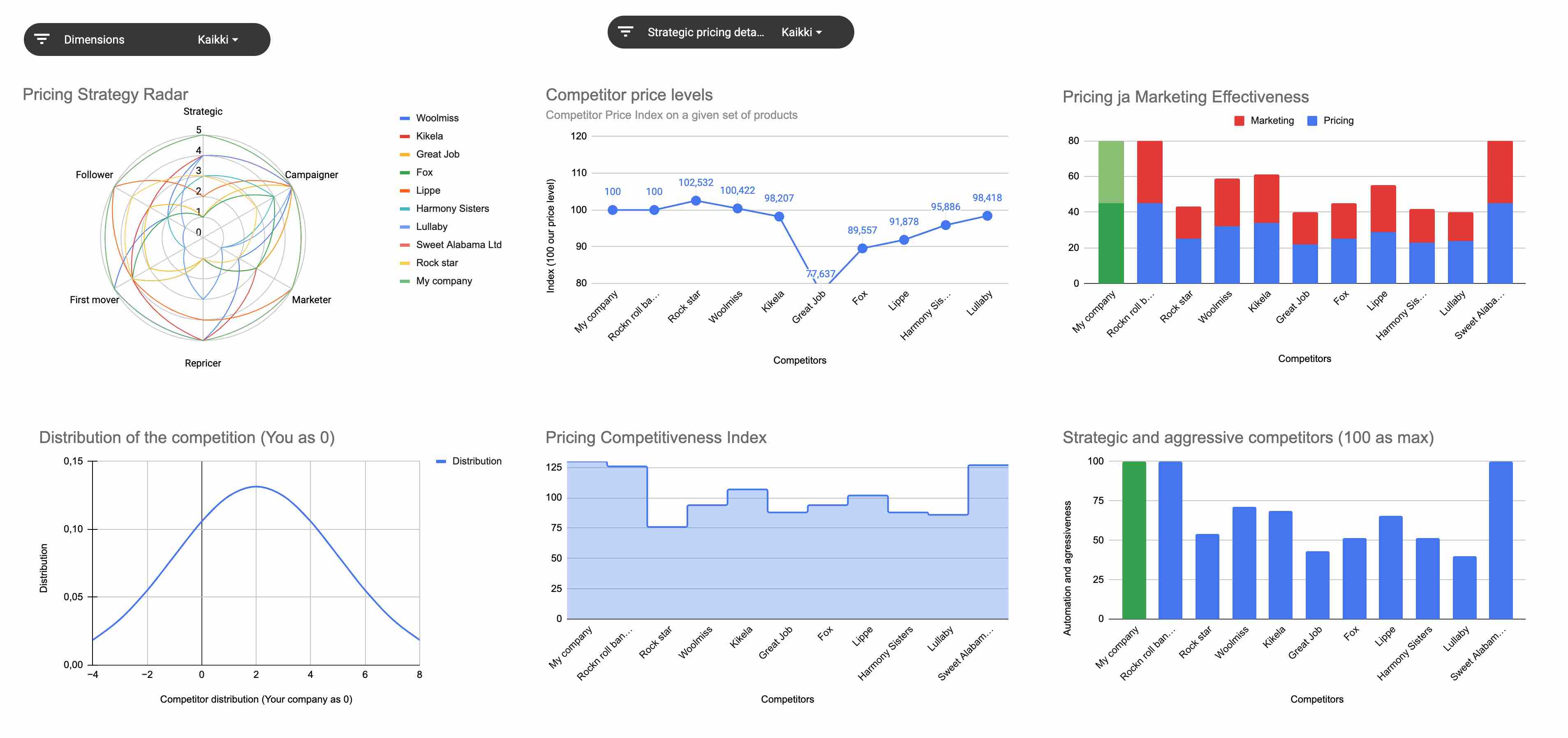Having a clear pricing strategy is essential for ecommerce and retail businesses. It serves as a guiding framework that aligns pricing decisions with the overall marketing positioning of your brand. In this blog post, we will explore the must-haves for creating a successful pricing strategy, covering key aspects such as overall strategy, pricing reflection, frequency of changes, golden rules, and profit considerations.
#1 Defining Your Overall Strategy
Begin by identifying the pricing strategy that best aligns with your business objectives. Common approaches include value-based pricing, competition-based pricing, cost-plus pricing, dynamic pricing, or a combination of these. Each strategy has its merits, and it’s important to choose one that resonates with your target market and brand identity.
#2 Reflecting Strategy in Pricing
Once you have determined your overall pricing strategy, it’s crucial to ensure that it is reflected in your pricing decisions. For instance, if you opt for a value-based approach, your prices should reflect the perceived value of your products or services. If competition-based pricing is your strategy, you’ll need to closely monitor and adjust prices in response to market dynamics.
#3 Frequency of Pricing Changes
Consider how often you should make changes to your pricing. This can vary based on industry, market trends, and competitive landscape. Some businesses may benefit from a dynamic pricing model that allows for frequent adjustments, while others may find a more stable pricing approach suits their target audience better. Strive for a balance between staying competitive and maintaining consistency.
Increase Profits and Revenue using our Strategy Tool
Ecommerce Pricing Strategy checklist
-
101 actionable strategy tips
-
Easy to understand impact measurement
-
Automatic dashboard on fixed issues
Ecommerce Pricing Strategy Checklist
Download Ecommerce Pricing Checklist
Download 101 tips from pricing experts to tune your pricing strategy already today!

Golden Rules for Pricing:
Establishing golden rules for pricing ensures consistency and avoids potential pitfalls. Here are a few examples:
- Avoid deep discounting unless it aligns with a specific marketing strategy or promotional event.
- Regularly review pricing data and market insights to identify opportunities and threats.
- Monitor competitor pricing strategies and react strategically to stay competitive.
- Consider bundling or tiered pricing options to cater to different customer segments.
- Continuously evaluate and optimize your pricing based on customer feedback and sales data.
Maximizing Profitability
Profitability is a vital aspect of any pricing strategy. While it may seem counterintuitive, setting higher prices doesn’t always guarantee higher profits. Consider factors such as production costs, customer demand shifts, and competitive dynamics when determining your pricing levels. Continuously analyze your profit margins and make data-driven adjustments to ensure sustainable profitability.
Analyse competitor pricing strategy
With our Competitor Pricing Strategy Analyzer you are able to insert information about your competitors to get clear dashboards and a comprehensive analysis of your competitors.

Implementing Your Pricing Strategy
To effectively implement your pricing strategy, it is crucial to establish clear guidelines for your pricing teams. Consider the following steps:
- Pricing Product Managers: Clearly define the responsibilities and goals for your pricing product managers. They should be responsible for analyzing market trends, competitive pricing, and customer preferences to make informed pricing decisions.
- Campaigns and Promotions: Collaborate with your marketing team to design pricing campaigns and promotions that align with your overall pricing strategy. Ensure these efforts are consistent with your brand positioning and target audience preferences.
- Key Performance Indicators (KPIs): Identify and monitor key performance indicators to measure the success of your pricing strategy. Examples include revenue growth, profit margins, market share, customer acquisition cost, and customer lifetime value.
Understand your pricing
Download our Margin Waterfall Analysis tool and get valuable insights and understanding on how different discounting techniques, costs and marketing will affect your profitability.

Conclusion
Crafting a robust pricing strategy is essential for ecommerce and retail businesses. By establishing an effective pricing strategy that aligns with your overall marketing positioning, regularly reviewing and adjusting prices, and maximizing profitability, you can stay competitive in the market and drive sustainable growth. Remember to document your strategy clearly and provide clear guidelines for implementation, empowering your pricing teams to make informed decisions that support your business objectives.



